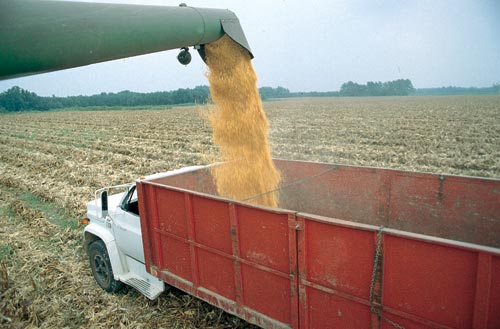
Corn growers support ethanol because it is good for our farmers, to be sure, and for other reasons as well.Economic conditions have improved for beef and dairy farmers since the implementation of the expanded Renewable Fuel Standard in 2007, according to a study released this past summer by Texas A&M University and Doane Advisory Services.
December 1, 2011

A recent Associated Press story discussed how certain members of the meat industry want to see changes made to our nation’s Renewable Fuel Standard, for the sole purpose of giving them access to cheaper corn.
That’s what it’s really all about for them.
Corn growers support ethanol because it is good for our farmers, to be sure, and for other reasons as well. It helps rural economies. It’s good for energy independence. And it’s better for the environment than gasoline. What’s not to like?
We supported the growth of the ethanol industry for reasons that are as valid today as they have ever been. Corn farmers have the ability to grow more corn per acre and this ability will continue for the foreseeable future, with some predicting 300 bushels per acre, more than double the 2011 crop. Finding other major uses for corn provides security and stability for the American farmer.
The fact is, this stability has carried over into other areas. Economic conditions have improved for beef and dairy farmers since the implementation of the expanded Renewable Fuel Standard in 2007, according to a study released this past summer by Texas A&M University and Doane Advisory Services.
The study determined that net cash farm incomes for representative beef-cow and dairy operations had increased since provisions of the biofuels mandate went into effect. Conclusion: Increased ethanol production has not negatively impacted the profitability of key livestock markets.
Been through a challenging year
Farmers in many parts of the Corn Belt had a very challenging year. Just consider these events:
• Rain and flooding in the Corn Belt that delayed planting this spring;
• Lost acreage to floods and blown levies along the Mississippi and Missouri rivers;
• Scorching heat and drought in Texas and the South;
• Abnormally high temperatures in the Corn Belt in July and August;
• Widespread damaging hail and wind during the latter growing season;
• Hurricane Irene causing devastation along the Atlantic Seaboard.
And yet, they brought in one of the largest corn crops ever, enough for all uses with corn to spare. When you factor in the impact of distillers grains from ethanol production, especially DDGS, or dried distillers grains with solubles, that’s another large amount of corn-based feed that the USDA reports has a lot of value to add.
So, while the meat industry loves to trot out the usual USDA stats on how much corn is used for ethanol, they ignore that even the USDA is clear there’s more to the story, as it says: “Feed market impacts of increased corn use for ethanol are smaller than that indicated by the total amount of corn used for ethanol production because of DDGS.”
Over the past few years, the livestock industry has been plagued by lackluster export demand and rising feed prices. This has now turned around. Export demand for beef, pork, and poultry is skyrocketing, making livestock husbandry profitable once again.
That’s why it’s disheartening to see some, especially food companies whose profits never flagged, selectively attack corn. This criticism of high corn prices seems unwarranted since December corn has already lost nearly $2 a bushel from this summer’s high prices
Finally, corn growers rely on a profitable livestock sector, which is why we have always championed them on many of their interests and issues, from animal welfare to free trade, to increase market demand for livestock products, not hindering one market to keep corn prices artificially low.
You May Also Like



